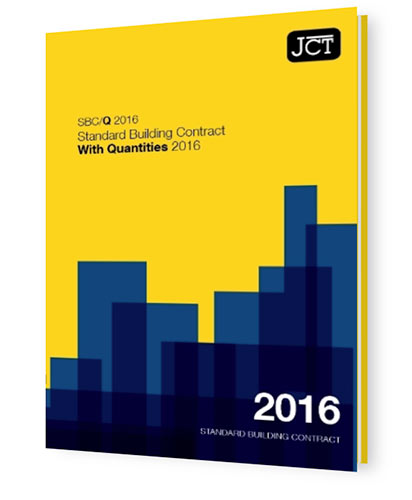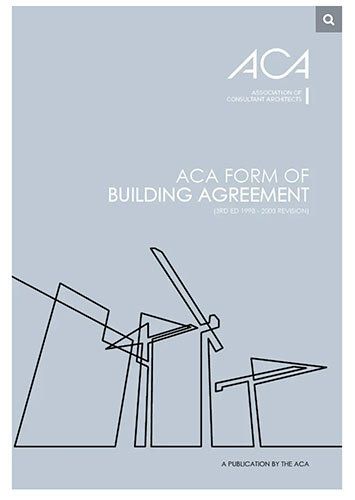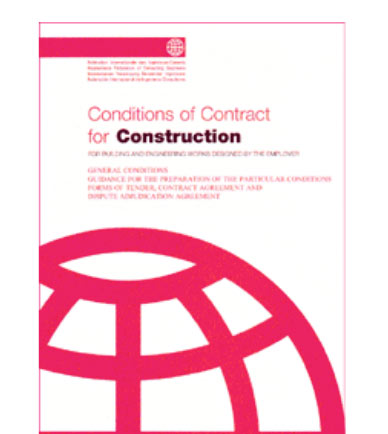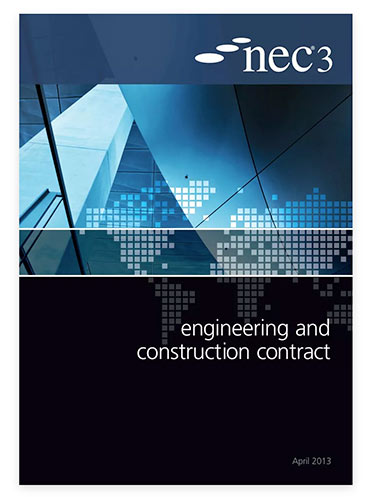Having a clear contract between the homeowner and builder is crucial for any building project, whether it’s a bathroom renovation or a two-story extension.
Discover the various types of building contracts, each with its own pros, cons, and specific conditions. Learn everything you need to choose the right one for your project.
Why Use a Contract for Building Work?
A building contract is essential to outline who will do the work, what will be built, and how much it will cost. It specifies responsibilities, rights, and who is liable for any issues that arise.
Most builders and tradespeople are honest and want fair compensation for their work. A good contract protects both the homeowner and the builder.
Unfortunately, some rogue traders may offer low prices only to add extra costs later. A clear, well-written contract prevents these problems and saves time and stress.
Understanding potential problems before they arise ensures a smoother project. Experienced builders can foresee issues by reviewing drawings and the site.
Even with unforeseeable problems, if both parties agree on their nature and cost, the project can proceed smoothly.
With the right contract and foresight, builders and homeowners can ensure a successful project and handle any issues without complications or bad feelings.
Here is a simple clause from our extensive Desired Outcome Building Contract:
Every material and product used will function as intended by the manufacturer. Recommendations for use will be followed at all times. Equivalent products may be used if they meet the same quality standards. Materials will always be satisfactory for the required work.
This statement reassures everyone involved. It prevents confusion and ensures that if a problem arises, the resolution and responsibility are clear.
A decent builder understands that a good contract protects both the homeowner and the builder. Just as there are rogue builders, there are also problematic customers who try to reduce costs unfairly. A contract protects against this too.
If a builder refuses to sign a contract, do not hire them. This is a red flag and likely a recipe for disaster.
In summary, a contract is a must to protect both the homeowner and the builder when significant money is involved.
Why Are There Different Types of Building Contracts?
There are various types of building contracts because every construction job is unique.
Even if a builder has constructed multiple single-story extensions, each project will differ due to varying ground conditions, drainage layouts, client preferences, and neighborhood characteristics.
Extensions may have different finishes and serve different purposes, such as kitchens, bedrooms, or bathrooms.
Clients also vary; some may be domestic, while others are businesses, leading to different payment terms, completion targets, and material requirements.
Given these variations, different types of building contracts are necessary to address the specific needs of each construction job.
Different Types of Building Contracts
Various construction contracts are available, but some are particularly relevant for domestic projects.
Here are the most common types of building contracts used in the UK and beyond:
JCT – Joint Contracts Tribunal Contract
Established in 1931, the JCT contract is the most well-known and widely used construction contract in the UK. It offers various contracts tailored to different types of projects.
The standard JCT contract is versatile, suitable for almost any construction job. It comes in six variations, covering private and local authority work, with options for including quantities, estimates, and other features.
Additionally, there are nine sub-contracts for specific tasks outside the main contract, such as maintenance, minor works, and domestic projects like extensions costing under £100,000.
All JCT contract forms are readily available for purchase and can be used for almost any building project.
To learn more, visit the JCT contract website.

Standard JCT building contract
DIY Doctor Desired Outcome Contract
Our Desired Outcome Contract took two years of research, crafted by tradesmen who understand the construction process. It was thoroughly reviewed by legal professionals to ensure accuracy and compliance.
While legal contracts are essential, they can sometimes include clauses that hinder project progress. Our contract, created by industry experts, ensures tasks are done in the right order, clearly defines responsibilities, and adheres to all regulations, providing comprehensive protection for everyone involved.
The Desired Outcome Contract addresses common issues in home improvement projects, offering a simple yet effective solution. Best of all, it’s completely free!
To learn more and download your free copy, visit our Desired Outcome Contract section.

Desired Outcome Building Contract
ICE Contract
The ICE contract, developed for the Institution of Civil Engineers, was first published in 1945 and remained in use until 2001.
For 56 years, it was the preferred contract for civil engineers, suitable for both public and private works.
This contract elevated the engineer to the same level as the architect, providing greater control over projects.
ACA – Association of Consultant Architects
The ACA contract, introduced by the Association of Consultant Architects, offers more flexibility than other contracts, allowing for adjustments during its creation.
It includes all standard clauses found in other contracts but can be easily customized by all parties involved.
To learn more, visit the ACA website.

The ACA construction agreement contract
FIDIC – International Federation of Consulting Engineers
Founded in 1913, FIDIC originated in France and initially included engineers from France, Switzerland, and Belgium. The UK joined in 1949, and today, over 60 countries are members.
FIDIC contracts, produced by the International Federation of Consulting Engineers, are primarily used by civil engineers employed by clients, positioning the engineer as the client’s main agent. However, many FIDIC contracts are suitable for various construction projects.
These contracts are trusted for large international projects due to their reliability and recognition by numerous global institutions.
To learn more, visit the FIDIC website.

The FIDIC Red Book contract
GC/Works/1 (1998)
The GC Works contract, known as “GC Works,” historically served as the primary choice for large-scale government contracts.
It consisted of four main volumes: seven versions of Volume 1 covering scenarios with and without quantities, single-stage design and build, and construction management; Volume 2 for minor works; Volume 3 for mechanical and engineering works; and Volume 4 for small works.
Additional contract documents supported these core volumes, addressing subcontractors, tendering processes, and parent companies.
GC Works contracts are no longer updated and are being phased out in favor of the more user-friendly NEC family of contracts for government use.
For more information, visit the NBS website.
NEC Contract
The NEC family of contracts has become the preferred choice for civil engineering projects, replacing GC Works and ICE contracts.
Originally named the New Engineering Contract, it was first published in 1993 and has since been updated to its fourth edition released in 2017.
The latest NEC document includes contract options A to F, featuring essential clauses and customizable options.
NEC contracts are favored for their alignment with modern construction and project management principles, and they are designed to be more user-friendly than older contract types.
For more details, visit the ICE website.

The NEC building contract
Other Forms of Contract
In addition to the main types of construction contracts used in the UK, there are other lesser-known types that can also be applied in construction projects, though they are more commonly used in the US.
These contract types include:
GMP Contracts
GMP, or Guaranteed Maximum Price contracts, set a ceiling price for projects, ensuring that the quoted cost remains the maximum expense, regardless of unforeseen circumstances during construction.
Typically, these contracts are used when contractors are confident that the project will proceed smoothly without additional costs.
Benefits include financial predictability for all parties involved, facilitating easier financing. Contractors can also focus on cost-cutting measures to optimize profitability with a fixed price.
However, entering into such contracts requires thorough assurance that the project will proceed without complications, which can lead to extended contract negotiation periods. Additionally, if issues arise, the contractor bears the financial responsibility.
Time and Materials Contract
A Time and Materials contract bases payment on the time spent and materials used for a job.
This contract is advantageous for contractors and builders as it covers material costs and sets a pay rate, typically hourly or daily.
While this assures builders a wage without material expenses, there’s a risk of some contractors prolonging jobs to increase earnings. To mitigate this, performance bonuses are often offered for timely completion.
Lump Sum Contract
A Lump Sum contract is one of the most widely used agreements in the construction industry worldwide. Similar to a GMP contract, it sets a fixed price for the entire project.
The main advantages include providing customers with a predictable budget and straightforward contract terms. Additionally, if the project costs less than expected, the builder stands to profit.
However, like with GMP contracts, any errors or unforeseen issues incur costs that the builder must cover.
Unit Price Contract
A Unit Price contract breaks down a construction project into individual units, each assigned an estimated price.
This contract type is preferred when project costs are uncertain, such as due to unknowns during construction or fluctuating material costs.
Benefits include ongoing cost transparency for the customer and flexibility for the builder to adjust prices based on actual unit quantities. This ensures the builder is covered throughout the project.
However, customers may face increased costs if unforeseen issues arise or if the scope of work expands during the project.
Cost-Plus Contract
In a Cost-Plus contract, the customer pays the builder for all project costs (like materials and labor) plus an agreed-upon profit margin.
The profit margin is typically a percentage of the total project cost, agreed upon by both parties.
This contract type offers flexibility for adjusting project details as needed during construction. It also protects the builder against unexpected costs that may arise.
However, transparency is crucial. The builder must provide clear records of expenses for customer approval. Delays in payment or disputes over costs can strain relationships and finances.
Remember, a contract is a formal agreement that can be as simple as a napkin note, but to avoid pitfalls, it’s wise to have a solicitor review it, whether self-drafted or from an official template.
If you are having any kind of building work or home improvements carried out by a builder then it is absolutely essential that you protect both yourself and your builder by completing a suitable building contract, so by using the information above, simply pick one and fill it out in detail.

